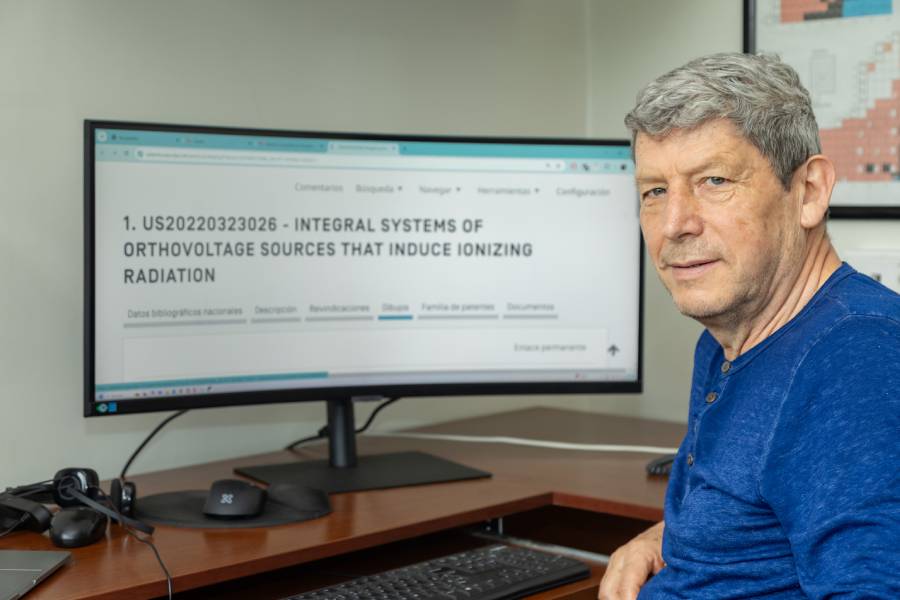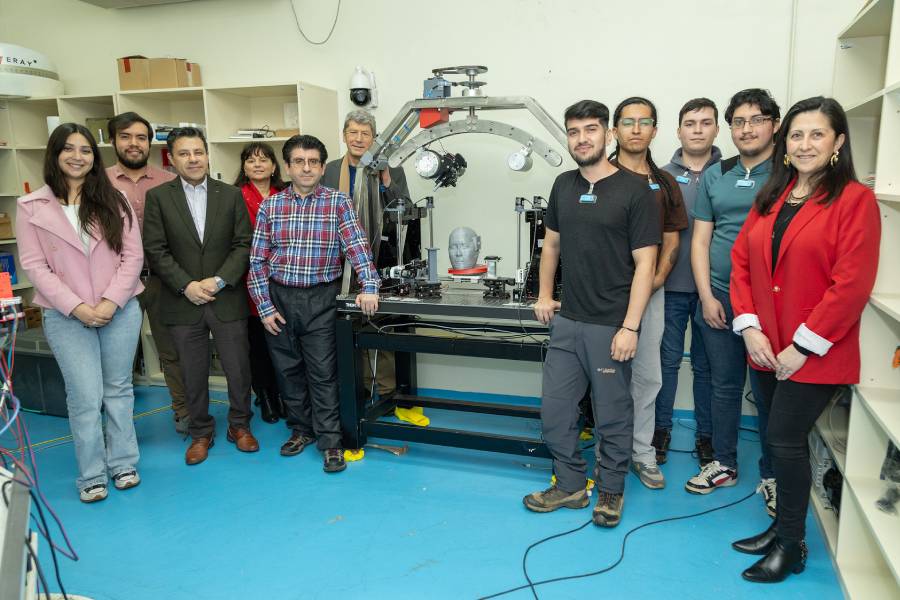|
Within his field of research in medical physics for the detection and treatment of cancer, the researcher Dr. Rodolfo Figueroa Saavedra achieved a fourth patent that enriches the portfolio of technologies developed at Universidad de La Frontera. |
Thanks to his thorough and constant work, Dr. Rodolfo Figueroa Saavedra, researcher of the Faculty of Engineering and Science and director of the Center of Excellence in Medical Physics and Engineering (CFIS) of the Universidad de La Frontera (UFRO), obtained a new patent in the United States. The name of this innovative technology that merges engineering and medical science to improve the simultaneous detection and treatment of cancer through the applied research, study, and development of cutting-edge high-precision methods, is called “COXIRIS“ (Confocal Orthovoltage X-Ray-Induced Radiation Integral Systems). “It is a significant recognition to get a patent in the United States, due to its high impact and prestige, which facilitates obtaining patents in other countries, where we have filed patent applications. Furthermore, it motivates us to continue developing applied research projects related to this patented technology and other patents in this field. Combined with the know-how, it provides the required support for an effective technology transfer”, explained Dr. Rodolfo Figueroa. This patent is a significant contribution to the project called “Functional Imaging Platform for Cancer Theranostics: Precise and Simultaneous Detection and Treatment of Cancer through X-ray Fluorescence (EDXRF)“, which is led by Dr. Figueroa and was recently awarded the ANID Advanced Technologies fund. This achievement represents more than 10 years of research in this field and is a great progress in the fight against cancer. At the same time, it represents the applied research carried out at UFRO. “It will have the capacity to detect, obtain images, and perform treatment through the detection of characteristic X-rays induced by the metallic nanoparticles fixed on a tumor biomarker, which can be found fixed on the malignant cells, allowing to attack the tumor or pathology of the patient with great precision, thanks to the confocal configuration of the device,“ the researcher added regarding the main characteristics of the device. Dr. Jorge Farías Avendaño, the dean of the Faculty of Engineering and Science, pointed out: “We are proud, as a university and faculty, of the remarkable work developed by Dr. Figueroa. This new patent consolidates the research in medical physics, a field of knowledge, in which he has generated knowledge of quality and excellence. His scientific work allows us to transcend the borders of our country.“ TECHNOLOGY FOR THE DETECTION AND TREATMENT OF CANCER By offering a high-precision system, this technology optimizes medical interventions and provides new possibilities for the management and treatment of cancer, a disease with high prevalence worldwide. According to studies by the Global Cancer Observatory (GLOBOCAN), 59,876 new cases were registered in Chile, with breast cancer being the most common in women (20.8%), and prostate cancer in men (29.5%). The director of the Office of Innovation and Technology Transfer, Franklin Valdebenito Godoy, highlighted the importance of this achievement: “Obtaining the fourth patent in the United States in the field of medical physics sets the course of the technologies being developed at UFRO, responding with urgent solutions to the needs of the scientific world,“ he pointed out. “The legal protection of this technology facilitates technology transfer and its commercialization in the United States. The technology led by Dr. Rodolfo Figueroa is a significant step forward in the field of theranostics and the international positioning of UFRO in terms of intellectual property and technology transfer,“ explained Gabriela Soto Faúndez, the coordinator of Technology Transfer, emphasizing that technology transfer is an important bridge between the academia and society.
 Written by: Office of Innovation and Technology Transfer Written by: Office of Innovation and Technology Transfer
Translated by: UFRO Communications Office |






